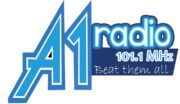The Vea Irrigation Dam, which started in 1965 and was completed in 1980, is supplying treated water to several communities such as Nyariga, Yorogo, Yorogo-Gabisi, Bolgatanga, Zaare, Yikene, and Sumbrungu in the Bolgatanga Municipality and its environs.
Located in Vea in the Bongo district of the Upper East Region, it was expected that residents of the Vea community would breathe a sigh of relief after drinking fluoride-contaminated water following the construction of the Vea dam, which has a water treatment plant.
Unfortunately, the community members have continued to drink underground water that has high fluoride content, which is bad for their teeth and bones. With several boreholes drilled in the community, the chief of Vea community, Naba Thomas Azubire II, said some boreholes drilled in the community that were contaminated with fluoride were capped and declared unsafe for human consumption.
“There are quite a number of boreholes that are declared fluoride contaminated water. Again, there are some boreholes where you would not get water in some boreholes during the dry season.”
He said efforts to get the Ghana Water Company Limited to supply the community with potable drinking water from the water it takes from the Vea dam to other communities have proved futile.
“We have been following the Ghana Water Company for them to connect the return pipe to our community, but they keep telling us to pay about Ghc14,000 and the community cannot meet that cost.”
Naba Azubire II, who was speaking to A1 Radio’s Joshua Asaah in an exclusive interview, described their predicament as “disheartening that the water is lying on the community’s land but the community members are suffering for safe drinking water.”
The Acting Regional Chief Manager of the Ghana Water Company Limited (GWCL) for the Upper East Region, Evans Atimbire, when contacted, said his outfit supplies water to urban areas while the Community Water and Sanitation Agency (CWSA) supplies water to rural areas, including Vea.
Regardless, he said the CWSA had written to the GWCL to supply water in bulk for them to distribute to the Bongo district, which would cover the Vea community.
“We have finished with the MoU, and if that is done in the course of this month to next month, we now see the way forward for supplying water to the areas that the Vea chief is concerned about,” he stated.
Mr. Atimbire said his outfit extended water lines to the Bongo district, but per the Legislative Instrument (LI), Ghana Water Company Limited does not have the mandate to supply water to rural areas without the approval of the Community Water and Sanitation Agency.
The Vea dam has the potential to irrigate about 1,300 hectares of land covering 9 communities in the Bongo district and Bolgatanga municipality. But only 850 hectares of land were developed for farming.
The chief of Vea, Naba Thomas Azubire II, regretted that residents of the community were not only denied access to potable water from the dam that is situated at Vea, but also did not have access to irrigable lands for farming purposes.
“Simply because, when they were going to make allocations, they started from Yikene and Sumbrungu, and when they got to this place [Vea], they said everybody should stand by boundaries. When they got to Vea, our lands were in the water and we couldn’t go inside the water to farm. We were stranded, and they had to share the lands according to 5 households per acre. Unfortunately, some household members couldn’t get a piece of land to crop”, he lamented.
Source: A1Radioonline.com|101.1Mhz|Joshua Asaah|Vea|Ghana



